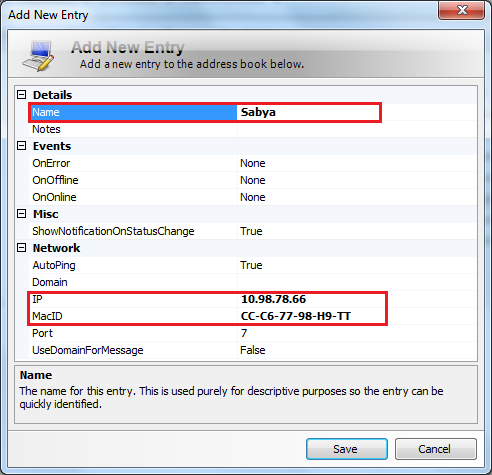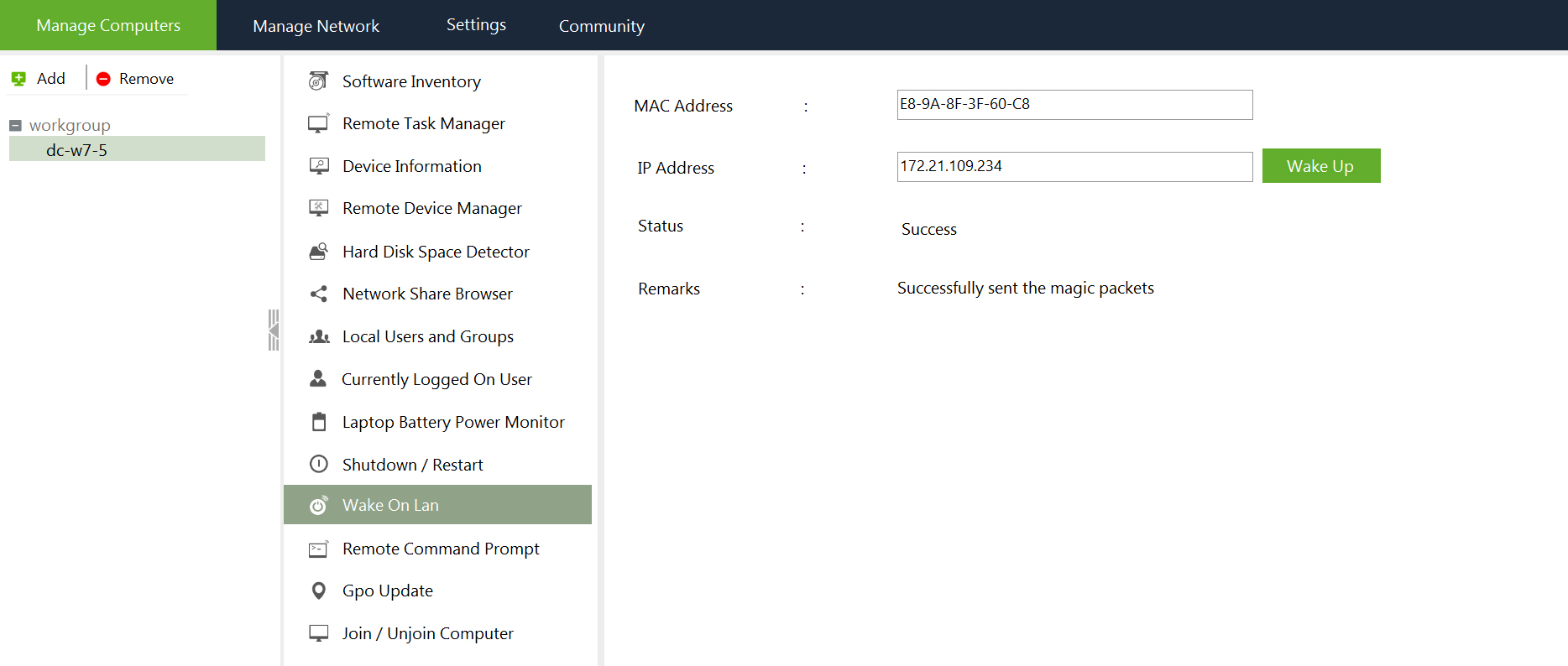
- #Remote wake up on lan how to
- #Remote wake up on lan manual
- #Remote wake up on lan Pc
- #Remote wake up on lan windows 8
#Remote wake up on lan how to
RELATED: How To Easily Access Your Home Network From Anywhere With Dynamic DNS You may want to look up information about forwarding Wake-on-LAN packets or forwarding packets to the broadcast address with your router. Some routers don’t not allow you to forward ports to this IP, so you may need to trick your router into allowing you to do this another way.
#Remote wake up on lan Pc
If your PC has the IP address 10.0.0.123, you’d enter 10.0.0.255 as the broadcast address.Īccess your router’s configuration page and locate the port-forwarding screen to configure this. For example, if your PC has the IP address 192.168.1.123, you’d enter 192.168.1.255 as the broadcast address. To do this, you’ll need to forward the port to the “broadcast address,” which will broadcast the packet to all computers on a network. This is known as a “subnet directed broadcast.” The Wake-on-LAN packet must be forwarded to every device running behind your router, and a device will only wake up if the information in the WoL packet matches it. You’ll need to forward a UDP port to all IP addresses behind your router-you can’t just forward to a specific IP address. Many utilities use ports 7 or 9, but you can use any port you like for this. RELATED: How to Forward Ports on Your Router

If yours doesn’t, you’ll need to disable Fast Startup.
#Remote wake up on lan windows 8
Note: Wake-on-LAN may not work on some PCs using the Fast Startup mode in Windows 8 and 10. RELATED: The Pros and Cons of Windows 10's "Fast Startup" Mode Click the Advanced tab, locate “Wake on magic packet” in the list, and enable it. Open the Windows Device Manager, locate your network device in the list, right-click it, and select Properties. You may also have to enable this option from within Windows, whether there’s a WoL option in your BIOS or not.

The computer may not support Wake-on-LAN or WoL may always be enabled and have no related options in the BIOS.
#Remote wake up on lan manual
If you don’t see this option in your BIOS or UEFI, check the computer or motherboard’s manual to see if it supports Wake-on-LAN. In your PC’s settings, ensure the Wake-On-LAN option is enabled. You’ll typically find this setting in a computer’s BIOS or UEFI settings. To make this work, you’ll first have to set up Wake-On-LAN normally. You are receiving this because you were mentioned.RELATED: What Is Wake-on-LAN, and How Do I Enable It? So maybe we want some explicit "LAN ID" property we report to control. The port-mapped endpoints would be aggressively distributed (to reduceĬonnection setup time, as they don't even require the firewall punching Replaced by L2 discovery, the STUN ones we'd exchange over DERP, and only Nodes have STUN-discovered endpoints with matching IPs, there's a decentīut STUN-discovered endpoints are one of the endpoint types we'd hoped to Or easier: we already report endpoint types these days. (to minimize bandwidth &īut I agree that something like the DHCP server's MAC address could also Private LAN endpoint addresses to control. We want to do that anyway to stop reporting

We should probably do LAN-based discovery of peer nodes (e.g. On Fri, at 5:54 PM Brad Fitzpatrick wrote: The local private addresses would be replaced by L2 discovery, the STUN ones we'd exchange over DERP, and only the port-mapped endpoints would be aggressively distributed (to reduce connection setup time, as they don't even require the firewall punching dance). If two nodes have STUN-discovered endpoints with matching IPs, there's a decent change they're on the same LAN.īut STUN-discovered endpoints are one of the endpoint types we'd hoped to prune from MapResponses in the future. So we know whether their endpoint 200.201.202.203:4523 was STUN-discovered or not. (to minimize bandwidth & MapResponse frequency)īut I agree that something like the DHCP server's MAC address could also work as a quicker solution. We want to do that anyway to stop reporting private LAN endpoint addresses to control. Then nodes would know their L2 neighbors.


 0 kommentar(er)
0 kommentar(er)
